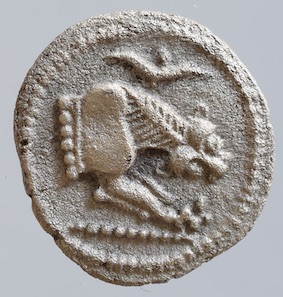History of the site
The literary tradition dates the foundation of Argilos to 655/654 B.C. which makes Argilos the earliest greek colony on the Thracian coast. Argilos occupied a privileged area and thus benefitted from the trading activities along the Strymona and probably also from the gold mines of the Pangeion. Ancient authors rarely mentioned the site, but nevertheless shed some light on the important periods of its history, seeming to indicate that the city enjoyed economic prosperity, at least until the foundation of Amphipolis in 437 B.C. In the last quarter of the 6th century B.C., Argilos founded two colonies, Tragilos, in the thracian heartland, and Kerdilion, a few kilometers to the East of the city. Herodotus says that in 480, after crossing the Strymona, the persian king Xerxès stopped at Argilos and forced its inhabitants into his army. After the persian defeat, Argilos became member of the first athenian confederation, paying 1,5 talents, a sum that proves that it was a rich city. But the foundation of Amphipolis, which took control of the trade along the Strymona, brought an end to this. Thucydides tells us that some Argilians took part in this foundation but that the relations between the two cities quickly deteroriated and, during the Peloponnesian war, the Argilians joined with the spartiate general Brasidas to attack Amphipolis. An inscription from the temple of Asklepios in Epidauros attests that Argilos was an independant city during the 4th century. Like other colonies in the area, the city was conquered by the Macedonian king Philip II in 357 B.C. Historians thought that the city was then abandoned, but our excavations have brought to light an important agricultural settlement on the acropolis, which dates to the years 350-200 B.C. No roman or byzantine ruins have been uncovered.





